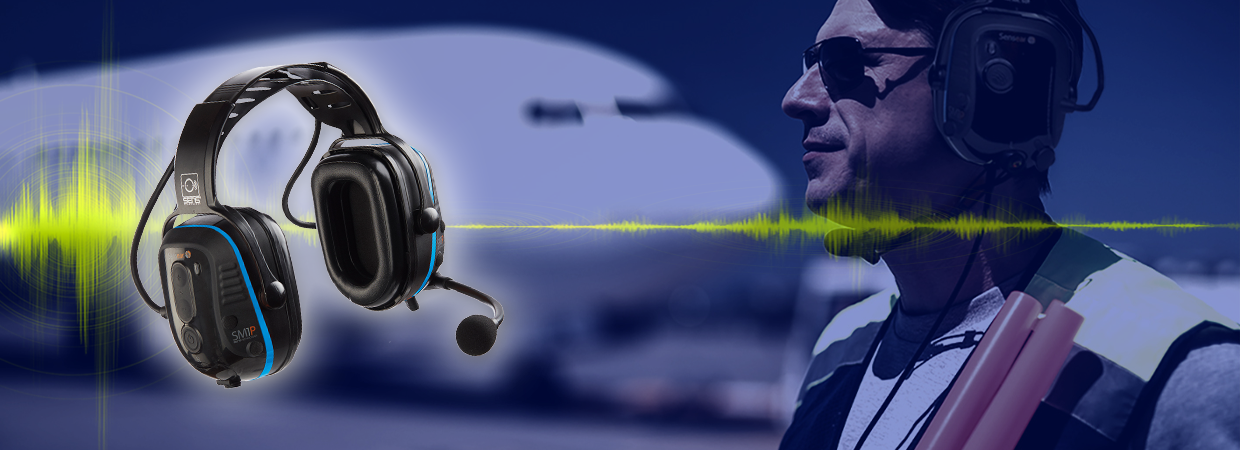- Home
- Blog
- Noise Suppression
- Noise Reduction Rating (NRR): A Beginner’s Guide

Noise Reduction Rating (NRR): A Beginner’s Guide
Many business owners are beginning to understand the importance of overly loud noise exposure on the job for employees and administrators alike. Business owners, administrators, and those who are heavily involved in businesses involving the use of heavy machinery and other loud equipment might be interested in protecting worker hearing. Learning as much as possible about hearing protection is a key characteristic of a well-rounded business owner, manager, or administration member.
Take a look at the information below to better understand one of the most important concepts of noise protection: the noise reduction rating, also sometimes referred to as the NRR. NRR is a common method for expressing values of noise reduction or attenuation provided by different types of hearing protectors; values range from 0 to approximately 30, with higher values indicating greater amounts of noise reduction. The higher the NRR number associated with a hearing protector, the greater the potential for noise reduction.
Noise Reduction Rating Measurement and OSHA
Noise reduction ratings are measured using the decibel, a standard unit of measurement used to describe how powerful or compressed a specific sound level is. Screenings are typically conducted in controlled laboratory experiments during which devices are tested in order to determine real-world capabilities. OSHA noise standards, 29 CFR, require a specifically tested device with strict standards.
Calculate the noise level at your ear using Sensear's Hearing Protection Calculator to make sure you are meeting OSHA-established permissible noise exposure limits.
Noise Reduction Rating and Attenuation
A noise reduction rating, also sometimes referred to under the umbrella term of “hearing protection rating,” can be a confusing concept for individuals who are just starting out in the world of hearing protection terminology. To make a long story short, noise reduction ratings are a set of “rules” that are set in place to serve as an absolute point of reference for those who are serious about protecting worker hearing. The NRR essentially functions as a “ruler” that measures how well a particular piece of hearing protection or equipment may work in real-time and space. Those who are serious about hearing protection may need to consider the fact that NRR is an estimate based on what will be achieved by 98% of the population if the hearing protection is properly fit (note that fit and individuality may skew the numbers drastically – in some cases by as much as 50%).
Note: the EPA is in the process of changing NRR rating labels. Instead of the former “one number” approach, the EPA has proposed changing the labels to indicate a range, from the minimally trained to the more proficient users, accounting for variability in usage and fit.
How Does Headset Hearing Protection Change Decibel Exposure Levels?
Noise reduction ratings are important because they indicate the functionality of a device, and the ability of that device to protect hearing in noisy environments.
In order to approximate an NRR, a little math is required; the equipment used to protect hearing does not reduce the decibel levels within a given environment by the precise decibel number that is tied to the NRR for that device. For example, a person who is working in a loud occupational environment may be exposed to noise as great as 100 dB(A). If an individual is wearing hearing protection equipment with an NRR of about 30 dB(A), the noise exposure amount would not be lowered to 70 dB(A). Instead, it would be lowered to 88.5 dB(A). Take a look at the following steps taken to determine the level of noise exposure after reduction:
- Subtract seven from the NRR number, which is given in decibels
- Divide the result by two
- Subtract the result from the original noise exposure level in decibels
For more information, feel free to visit the OSHA website.
Hearing protection is a must in noisy work environments to protect employees. Keeping the information above in mind can help you better understand noise exposure levels and Noise Reduction Ratings for specific hearing protection devices. For more information on what to look for when buying a noise suppression headset check out our Buyer's Guide to Headsets.
If you want some more information on how to protect your employees’ hearing, feel free to contact one of Sensear’s high-noise hearing specialists.









